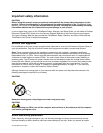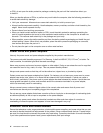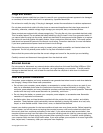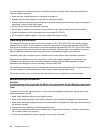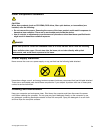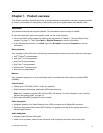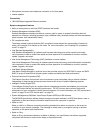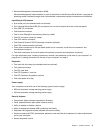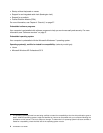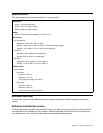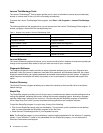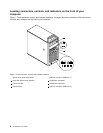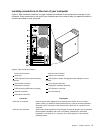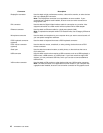
• Windows Management Instrumentation (WMI)
Windows Management Instrumentation is a set of extensions to the Windows Driver Model. It provides an
operating system interface through which instrumented components provide information and notication.
Input/Output (I/O) features
• 9-pin serial port (one standard and one optional)
• Four Universal Serial Bus (USB) 2.0 connectors (two on the front panel and two on the rear panel)
• Four USB 3.0 connectors
• One Ethernet connector
• One or more DisplayPort connectors (varies by model)
• One DVI connector (varies by model)
• One VGA monitor connector
• One Personal System/2 (PS/2) keyboard connector (optional)
• One PS/2 mouse connector (optional)
• Three audio connectors on the rear panel (audio line-in connector, audio line-out connector, and
microphone connector)
• Two audio connectors on the front panel (microphone connector and headphone connector)
For more information, see “Locating connectors, controls, and indicators on the front of your computer” on
page 8
and “Locating connectors on the rear of your computer” on page 9.
Expansion
• Two hard disk drive bays (one standard and one optional)
• Two optical drive bays
• Two PCI card slots
• One PCI Express x1 card slot
• One PCI Express x16 graphics card slot
• One card reader drive bay
Power supply
Your computer comes with one of the following types of power supply:
• 280-watt automatic voltage-sensing power supply
• 450-watt automatic voltage-sensing power supply
Security features
• Computrace Agent software embedded in rmware
• Cover presence switch (also called intrusion switch)
• Ability to enable or disable a device
• Ability to enable and disable USB connectors individually
• Keyboard with ngerprint reader (shipped with some models)
• Power-on password (POP), administrator password, and hard disk drive password to deter unauthorized
use of your computer
• Startup sequence control
Chapter 1. Product overview 3



